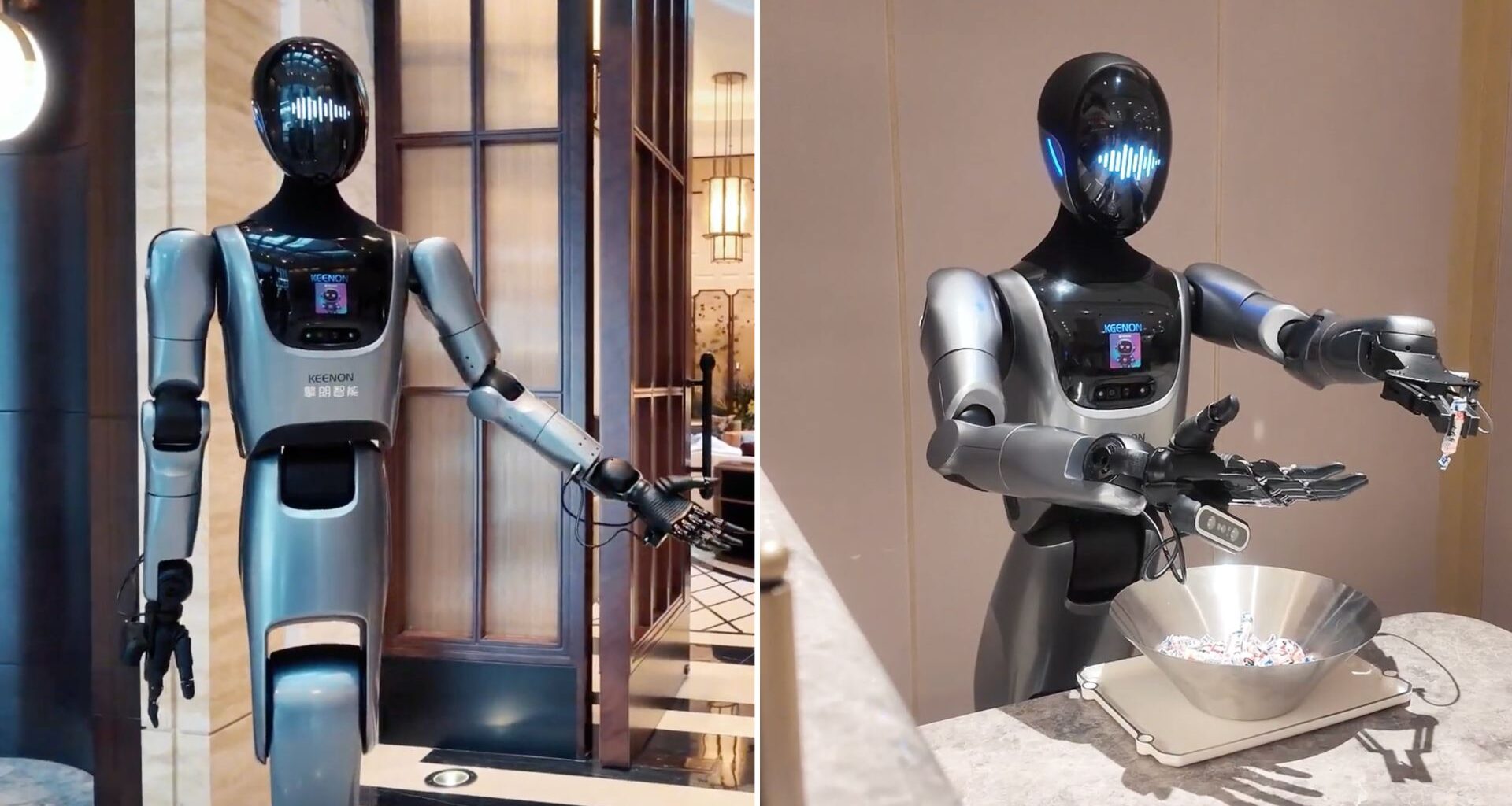A new milestone in hospitality technology has emerged in China. The Shangri-La Traders Hotel at Shanghai Hongqiao Airport has officially deployed the humanoid service robot XMAN-R1, created by Keenon Robotics, a Shanghai-based service robotics firm.
The hotel has become the ‘world’s first’ to showcase a collaborative service model featuring both general-purpose and special-purpose robots.
These robots now perform a range of daily operations, including guest greetings, cleaning, food and item delivery, and luggage handling. The project aims to demonstrate how artificial intelligence and robotics can improve service efficiency while maintaining a personalized guest experience.
With rising guest demand and the need for consistent service quality, the hotel management turned to Keenon’s robot matrix to optimize human resource use and ensure reliability across operations.
XMAN-R1: The humanoid greeter that talks and moves naturally
At the heart of this transformation is XMAN-R1, the company’s humanoid service robot. Positioned at the hotel’s front desk, it acts as a greeter that can engage guests through natural language, answer questions, and even offer welcome gifts.
Through lifelike movements and speech, the robot creates a highly immersive and futuristic experience for visitors. Supporting XMAN-R1 are Keenon’s special-purpose robots: the W3 robot manages in-room deliveries, the S100 handles luggage transport, the C40 oversees cleaning, and the T10 and T3 take care of restaurant food deliveries.
The firm describes XMAN-R1 as “Role-Oriented, User-Friendly, and Safety-First.” It was built using vast real-world data collected over years of research into service environments.
The robot is powered by Keenon’s self-developed KOM2.0, the world’s first Vision-Language-Action (VLA) model for the service industry, which allows it to understand and perform complex tasks seamlessly.
Inside Keenon’s vision-language-action model
KOM2.0 serves as the robot’s core intelligence system, integrating vision, speech, and movement capabilities into a unified framework. This allows XMAN-R1 to interpret human intentions and respond contextually in real-time.
In addition, the robotics firm has developed KEENON ProS, a specialized model designed for vertical industries like hospitality. It functions as professional training software, equipping robots with domain-specific skills for their assigned roles.
The company’s approach to “Robot Role-Orientation” divides service scenarios into well-defined modules, each corresponding to a specific role such as delivery, cleaning, or guest service.
This method streamlines the deployment process and enables precise “Robot-to-Role” assignments, which accelerate the commercial adoption of humanoid robots in real-world settings.
Redefining service through collaborative robotics
With 15 years of experience in robotics innovation, the Shanghai-based firm has deployed over 100,000 robots in more than 60 countries and regions. Its robots are designed to address the complex and dynamic nature of the service industry, where flexibility and interaction are crucial.
By combining humanoid and task-specific robots, Keenon aims to strike a balance between adaptability and operational efficiency. Humanoid robots, such as XMAN-R1, excel in communication and customer-facing roles, while special-purpose robots deliver speed and precision in repetitive tasks.
The deployment at Shangri-La Traders Hotel represents a key step toward integrating embodied intelligence into everyday business operations. It demonstrates how AI-driven collaboration between different robot types can enhance hotel performance, improve guest satisfaction, and reduce management costs.

